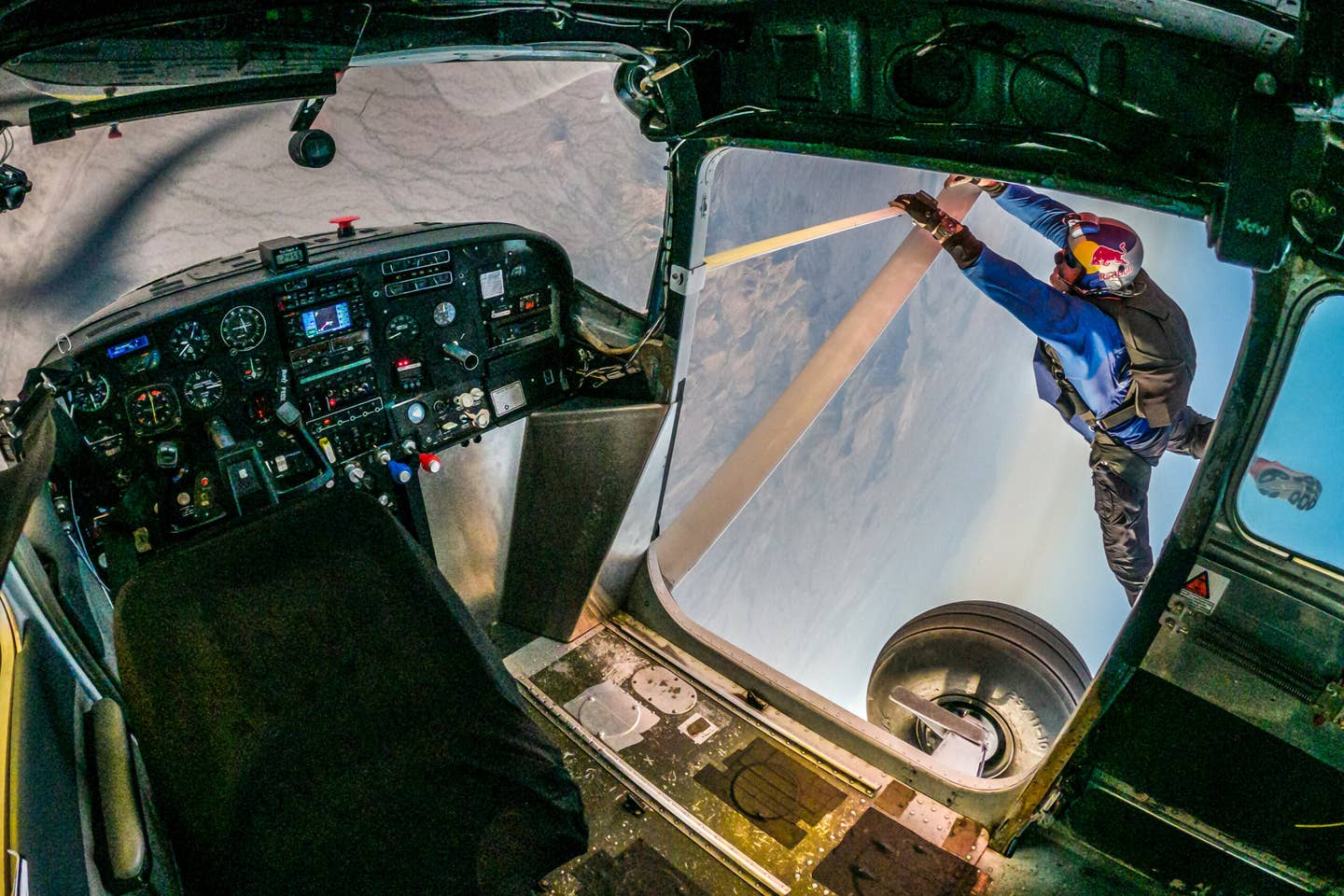
Pilot Luke Aikins is seen successfully entering the silver airplane, during Plane Swap in Eloy, Arizona, on April 24, 2022. [Photo: Predrag Vuckovic / Red Bull Content Pool]
A pilot in his 20s climbs into an airplane and takes off to perform a record-setting stunt that is sure to impress his millions of followers. The plot so far might bear a current-day familiarity, but in this case, the year is 1914 and the pilot is Lincoln Beachey.
Beachey was a pioneer of aerial demonstrations and aerobatics during aviation’s first decade and became wealthy by testing his aircraft’s limits while thrilling airshow audiences.
“There is a correlation between Beachey and people who perform aerial stunts today to gain views on YouTube,” says Willie Turner, vice president of operations and marketing at the Hiller Aviation Museum in San Carlos, California, where Beachey’s original Little Looper biplane is on display. “They are all entertaining the audience to an extreme level,” he says.
But aviation regulations and enforcement have changed in the last 100-plus years. Society’s expectations regarding safety have also evolved, so today’s stunt pilots cannot expect the level of freedom and permissiveness that Beachey enjoyed.
Indeed, the FAA quickly announced investigations of the team that organized and performed last weekend’s Red Bull Plane Swap, and of Trevor Jacob, the former Olympic snowboarder and YouTuber who allegedly crashed his aircraft intentionally last November. The agency later revoked Jacob’s pilot certificate.
Many people have expressed concern online and elsewhere that the FAA might need to change its regulatory approach to properly address what looks to some like a trend toward increasingly dangerous flying in a quest for views, likes, and comments on social media.
William Voss, a pilot and former FAA official, says the agency’s regulations are “very clear,” but that in some cases, the options for enforcement are less so because “there is no clear category” for the types of violations that arise from certain types of stunts, especially when the pilots perform them without permission and choose to disobey regulations. Some of the fines the FAA charges for violations, for example, may be too low to be a deterrent and “a little bit out of date,” Voss says.
“People have gotten better at monetizing social media. They make the calculations and realize they can make more money than they lose by getting the views and paying a fine.”
Voss says the FAA has to be careful about how it treats the Red Bull case. “Unless there is a firm response to this, people might get the message that you can do crazy things with airplanes and get away with it.”
“People have gotten better at monetizing social media. They make the calculations and realize they can make more money than they lose by getting the views and paying a fine.”
William Voss, pilot and former FAA official
Regarding the Red Bull case, the FAA said, “We investigate each incident based on the specific circumstances and take the appropriate steps based on what the evidence tells us.”
The agency declined to comment further, however, it released the letter it sent to Plane Swap pilot Luke Aikins. It explains that the Red Bull group requested an exemption from a regulation that essentially requires pilots to be strapped into seats and flying the plane unless they are performing other necessary duties. The letter also states why the agency denied the request.
In the letter, Robert C. Carty, the FAA’s deputy executive director of its flight standards service, says, “The proposed exemption, if granted, would authorize Luke Aikins and Andy Farrington to depart the flight deck and attempt to swap aircraft in-flight while both aircraft are at vertical dive. During the swap, both aircraft will be unoccupied.
The regulation, section 91.105(a) “prescribes that during takeoff and landing, and while en route, each required flight crewmember shall (1) be at the crewmember station unless the absence is necessary to perform duties in connection with the operation of the aircraft or in connection with physiological needs; and (2) keep the safety belt fastened while at the crewmember station,” the FAA letter states.
While the Red Bull request refers to the plane swap as part of a project in the public interest that promotes aviation in science, technology, engineering, and math, the agency, in denying the request, says it finds no such public interest.

Sign-up for newsletters & special offers!
Get the latest FLYING stories & special offers delivered directly to your inbox






